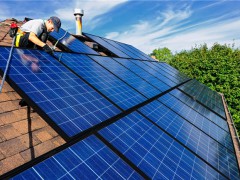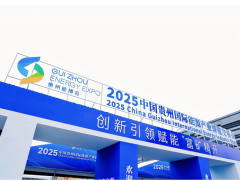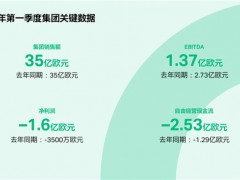據(jù)鉆機(jī)地帶5月18日消息,到目前為止,頁(yè)巖勘探者們已經(jīng)通過(guò)了考驗(yàn)。
由于投資者對(duì)過(guò)度支出而無(wú)回報(bào)的表現(xiàn)感到不滿,該行業(yè)在今年前三個(gè)月設(shè)法抵制了油價(jià)上漲22%的趨勢(shì),使產(chǎn)出幾乎持平。
一份關(guān)于鉆井公司的綜合數(shù)據(jù)顯示,該行業(yè)有望獲得創(chuàng)紀(jì)錄的自由現(xiàn)金流,并有跡象表明,并顯示出該行業(yè)已開(kāi)始有所作為。同時(shí)也有跡象表明,在工人們最終重返油田的同時(shí),鉆井速度也在緩慢上升,兩者之間存在微妙的平衡。
高盛集團(tuán)分析師尼爾?梅塔周一在給投資者的一份報(bào)告中寫(xiě)道:“我們對(duì)盈利充滿持續(xù)信心,因勘探開(kāi)發(fā)業(yè)務(wù)對(duì)大宗商品價(jià)格上漲的回應(yīng)十分自律。”盡管四分之一的自律可能還不足以讓勘探者們證明他們對(duì)節(jié)制的承諾,但至少有跡象表明,他們終于注意到了投資者要求緊縮的呼聲。
自由現(xiàn)金流可能是當(dāng)今頁(yè)巖氣領(lǐng)域最受關(guān)注的指標(biāo),根據(jù)彭博對(duì)31家獨(dú)立美國(guó)油氣公司的分析,到目前為止,頁(yè)巖氣領(lǐng)域的自由現(xiàn)金流預(yù)計(jì)將比以往任何時(shí)候都多。
但并不是只有最大的獨(dú)立頁(yè)巖氣生產(chǎn)商——比如EOG資源公司已經(jīng)公布了第一季度創(chuàng)紀(jì)錄的自由現(xiàn)金流——向投資者展示了資金。Diamondback Energy Inc.預(yù)計(jì)在支付股息之前將產(chǎn)生創(chuàng)紀(jì)錄的14億美元自由現(xiàn)金流。
除了油價(jià)回升有助于他們的努力外,勘探公司還通過(guò)避免大規(guī)模鉆探來(lái)增加現(xiàn)金儲(chǔ)備。例如,德文能源公司計(jì)劃在“有利”條件下將產(chǎn)量增長(zhǎng)限制在5%。
首席執(zhí)行官Rick Muncrief在本月初的電話會(huì)議上對(duì)分析師和投資者表示:“我們的業(yè)務(wù)規(guī)模可以產(chǎn)生大量的自由現(xiàn)金流。有了這樣強(qiáng)大的現(xiàn)金流,我覺(jué)得有必要重申,在需求方基本面恢復(fù)、歐佩克+的閑置石油產(chǎn)能明顯被全球市場(chǎng)有效吸收之前,我們不會(huì)將資本配置到增長(zhǎng)項(xiàng)目上。”
盡管關(guān)于“自由現(xiàn)金流”的話題較三個(gè)月前有所下降,但在美國(guó)石油勘探商和生產(chǎn)商召開(kāi)的收益電話會(huì)議上,這仍然是最熱門(mén)的話題。在過(guò)去12個(gè)月里,在電話會(huì)議和演講中,這個(gè)詞出現(xiàn)了822次,比五年前同期增長(zhǎng)了1000%以上。
美世資本(Mercer Capital)分析師賈斯汀?拉米雷斯表示,市場(chǎng)正在關(guān)注這一趨勢(shì),這表明“原油價(jià)格將脫離深淵,繼續(xù)上升”。
為了應(yīng)對(duì)去年的石油危機(jī),美國(guó)生產(chǎn)商將2020年的資本支出削減了近一半,這意味著數(shù)千個(gè)工作崗位的流失。
現(xiàn)在,這個(gè)行業(yè)正在回升,就業(yè)機(jī)會(huì)也在回升。但在招聘方面仍需謹(jǐn)慎。盡管3月份新增的9900個(gè)石油支持崗位是有記錄以來(lái)最大的月度增幅,但美國(guó)石油和天然氣行業(yè)的工人總數(shù)仍比幾年前減少了近四分之一。
企業(yè)再次被迫面對(duì)不斷增加的債務(wù),這一次是在2019年底杠桿率飆升至1500億美元以上之后。繼去年的減產(chǎn)之后,勘探公司今年正利用其超大規(guī)模的現(xiàn)金做更多的事情。
赫斯公司首席執(zhí)行官約翰·赫斯上個(gè)月在一次電話會(huì)議上告訴分析師和投資者:“由于我們的投資組合產(chǎn)生了越來(lái)越多的自由現(xiàn)金流,我們將首先削減債務(wù),然后通過(guò)增加股息和機(jī)會(huì)主義的股票回購(gòu)向股東返還現(xiàn)金”。
馬拉松石油公司本月表示,將把今年的債務(wù)削減目標(biāo)提高一倍,至10億美元。
盡管鉆探活動(dòng)正在從去年的封鎖中恢復(fù),但尋找石油的鉆機(jī)數(shù)量仍約為2020年初全球疫情流行沉重打擊油價(jià)之前水平的一半。
裘寅 編譯自 Rigzone
原文如下:
Shale Drillers Show Restraint in Q1
So far, shale explorers are passing the test.
The industry, much maligned by investors for excessive spending without returns to show for it, has managed to resist a 22% run-up in oil prices during the first three months of this year, holding output almost flat.
A round-up of data on the drillers shows expectations for record free cash flow and signs that the industry is starting to pay its way. There are also indications of a delicate balance between workers finally returning to the fields, while drilling ramps up at a more moderate pace.
“We emerge from earnings season with continued confidence in a disciplined response from covered E&Ps to higher commodity prices,” Goldman Sachs Group Inc. analysts including Neil Mehta wrote Monday in a note to investors. While one quarter of discipline may not be sufficient for explorers to prove their commitment to moderation, there are at least signs that they’re finally heeding investors’ pleas for austerity, the analysts wrote.
Free cash flow is perhaps the most closely watched metric in the shale patch these days, and so far, the sector is projected to make more of it than ever before, based on a analysis of 31 independent U.S. oil and gas companies.
But it’s not just the biggest independent shale producers -- like EOG Resources Inc. which already reported record free cash flow in the first quarter -- that are showing investors the money. Diamondback Energy Inc. expects to generate a record $1.4 billion in free cash flow before paying out a dividend.
In addition to rebounding oil prices aiding their efforts, explorers are adding to the cash piles by avoiding a huge return to drilling. Devon Energy Corp., for example, plans to cap output growth at 5% in times of “favorable” conditions.
“Our operations are scaled to generate substantial amounts of free cash flow,” Chief Executive Officer Rick Muncrief told analysts and investors earlier this month on a conference call. “With this powerful cash flow stream, I feel it is important to reiterate that we have no intention of allocating capital to growth projects until demand-side fundamentals recover and it becomes evident that OPEC+ spare oil capacity is effectively absorbed by the world markets.”
While talking about “free cash flow” dipped a bit from three months earlier, it’s still the hottest topic on earnings calls hosted by U.S. oil explorers and producers. Over the past 12 months, it’s come up 822 times during calls and presentations, an increase of more than 1,000% from the same period five years earlier.
The market is taking notice of the trend, which, according to Justin Ramirez, an analyst at Mercer Capital, indicates a ”continued upward trajectory out of the crude abyss.”
U.S. producers responded to last year’s oil collapse by cutting 2020 capital spending almost in half, and that translates into thousands of jobs lost.
Now that the industry is climbing back, so are the jobs. But there’s still caution in hiring.
Although the 9,900 oil-support positions added in March was the largest monthly gain on record, the overall number of U.S. workers in oil and gas remains almost a quarter less than a couple years ago.
Companies are once again forced to face their mounting debts, this time after leverage ballooned to more than $150 billion at the end of 2019. Following up on last year’s reduction, explorers are using their out-sized cash this year to do more.
“As our portfolio generates increasing free cash flow, we’ll first prioritize debt reduction, and then cash returns to shareholders through dividend increases and opportunistic share repurchases,” Hess Corp. CEO John Hess told analysts and investors last month on a conference call.
Marathon Oil Corp., in giving up its corporate aircraft program to cut costs, said this month it will double its goal of debt reduction this year to $1 billion.
And while drilling is returning from the depths of last year’s lockdown, the number of rigs hunting for oil still remains at roughly half the level they were at before the global pandemic wrecked oil prices in early 2020.
免責(zé)聲明:本網(wǎng)轉(zhuǎn)載自其它媒體的文章,目的在于弘揚(yáng)石化精神,傳遞更多石化信息,并不代表本網(wǎng)贊同其觀點(diǎn)和對(duì)其真實(shí)性負(fù)責(zé),在此我們謹(jǐn)向原作者和原媒體致以敬意。如果您認(rèn)為本站文章侵犯了您的版權(quán),請(qǐng)與我們聯(lián)系,我們將第一時(shí)間刪除。







